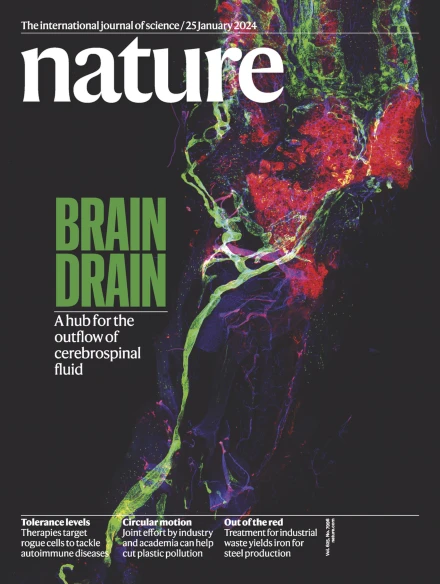Functional connectomics reveals general wiring rule in mouse visual cortex
IF 50.5
1区 综合性期刊
Q1 MULTIDISCIPLINARY SCIENCES
引用次数: 0
Abstract
Understanding the relationship between circuit connectivity and function is crucial for uncovering how the brain computes. In mouse primary visual cortex, excitatory neurons with similar response properties are more likely to be synaptically connected1–8; however, broader connectivity rules remain unknown. Here we leverage the millimetre-scale MICrONS dataset to analyse synaptic connectivity and functional properties of neurons across cortical layers and areas. Our results reveal that neurons with similar response properties are preferentially connected within and across layers and areas—including feedback connections—supporting the universality of ‘like-to-like’ connectivity across the visual hierarchy. Using a validated digital twin model, we separated neuronal tuning into feature (what neurons respond to) and spatial (receptive field location) components. We found that only the feature component predicts fine-scale synaptic connections beyond what could be explained by the proximity of axons and dendrites. We also discovered a higher-order rule whereby postsynaptic neuron cohorts downstream of presynaptic cells show greater functional similarity than predicted by a pairwise like-to-like rule. Recurrent neural networks trained on a simple classification task develop connectivity patterns that mirror both pairwise and higher-order rules, with magnitudes similar to those in MICrONS data. Ablation studies in these recurrent neural networks reveal that disrupting like-to-like connections impairs performance more than disrupting random connections. These findings suggest that these connectivity principles may have a functional role in sensory processing and learning, highlighting shared principles between biological and artificial systems. The MICrONS mouse visual cortex dataset shows that neurons with similar response properties preferentially connect, a pattern that emerges within and across brain areas and layers, and independently emerges in artificial neural networks where these ‘like-to-like’ connections prove important for task performance.


功能连接组学揭示了小鼠视觉皮层的一般布线规律
理解电路连接和功能之间的关系对于揭示大脑如何进行计算至关重要。在小鼠初级视觉皮层中,具有相似反应特性的兴奋性神经元更有可能是突触连接的1,2,3,4,5,6,7,8;然而,更广泛的连接规则仍然未知。在这里,我们利用毫米尺度的MICrONS数据集来分析皮层层和区域神经元的突触连通性和功能特性。我们的研究结果表明,具有相似反应特性的神经元在层和区域内优先连接,包括反馈连接,支持视觉层次中“喜欢到喜欢”连接的普遍性。使用经过验证的数字孪生模型,我们将神经元调谐分为特征(神经元对什么做出反应)和空间(接受野位置)组件。我们发现,只有特征成分能够预测精细尺度的突触连接,而不是轴突和树突的接近所能解释的。我们还发现了一个高阶规则,即突触前细胞下游的突触后神经元群显示出比两两相似规则预测的更大的功能相似性。在一个简单的分类任务上训练的循环神经网络发展出了反映成对和高阶规则的连接模式,其量级与MICrONS数据中的相似。对这些递归神经网络的消融研究表明,破坏同类连接比破坏随机连接更能损害性能。这些发现表明,这些连接原则可能在感觉处理和学习中发挥功能作用,突出了生物系统和人工系统之间的共同原则。
本文章由计算机程序翻译,如有差异,请以英文原文为准。
求助全文
约1分钟内获得全文
求助全文
来源期刊

Nature
综合性期刊-综合性期刊
CiteScore
90.00
自引率
1.20%
发文量
3652
审稿时长
3 months
期刊介绍:
Nature is a prestigious international journal that publishes peer-reviewed research in various scientific and technological fields. The selection of articles is based on criteria such as originality, importance, interdisciplinary relevance, timeliness, accessibility, elegance, and surprising conclusions. In addition to showcasing significant scientific advances, Nature delivers rapid, authoritative, insightful news, and interpretation of current and upcoming trends impacting science, scientists, and the broader public. The journal serves a dual purpose: firstly, to promptly share noteworthy scientific advances and foster discussions among scientists, and secondly, to ensure the swift dissemination of scientific results globally, emphasizing their significance for knowledge, culture, and daily life.
 求助内容:
求助内容: 应助结果提醒方式:
应助结果提醒方式:


